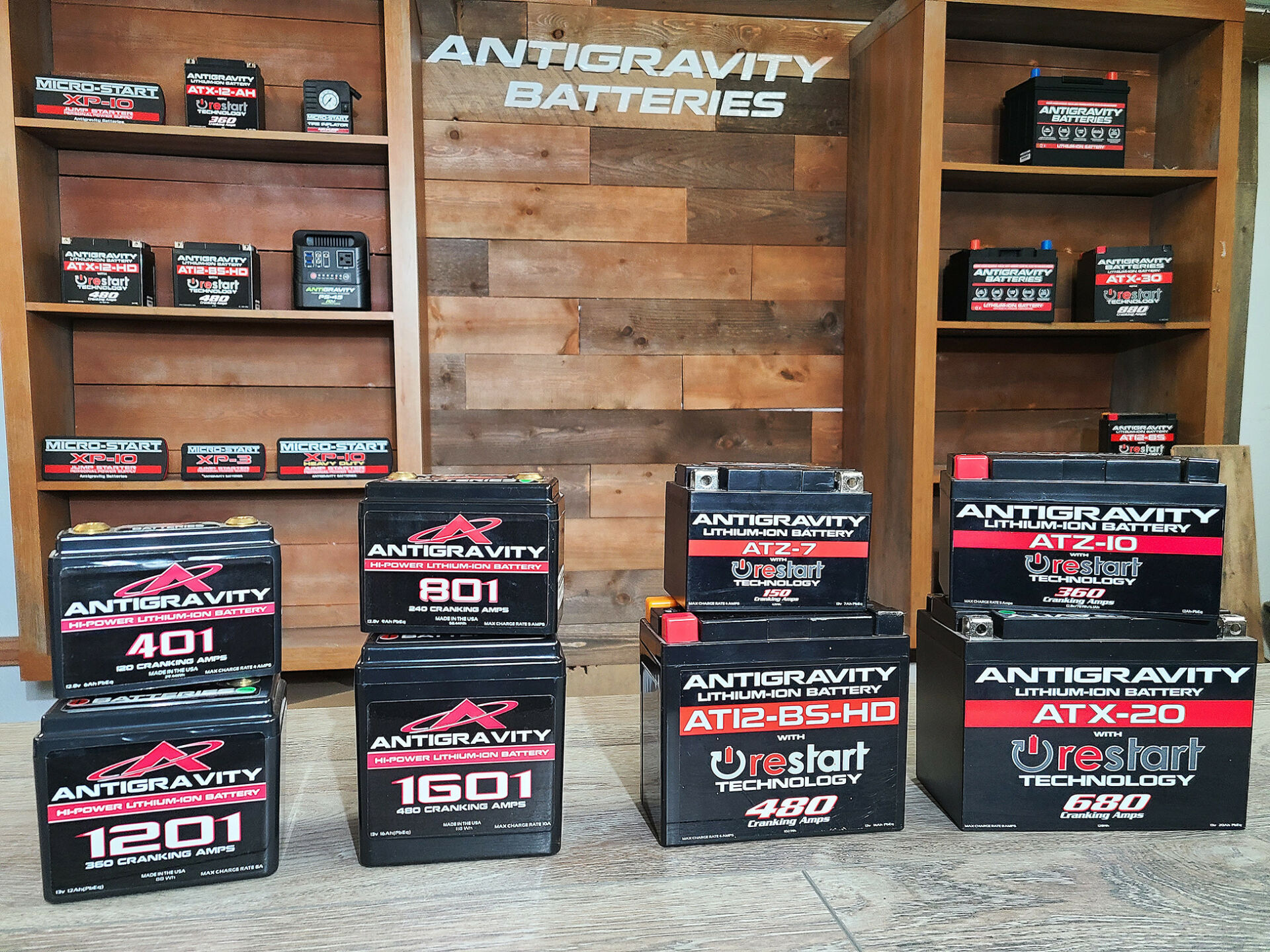Editorial Note: This article originally appeared in the January 2021 issue of Roadracing World & Motorcycle Technology magazine.
By David Swarts
Inspiration, innovation, and perspiration are just three of the many ingredients necessary to start and grow a manufacturing business. Scott Schafer didn’t invent lightweight lithium-ion batteries, and wasn’t in the battery business. But when he bought (and liked) a lightweight lithium-ion battery and it quickly died, he decided to do something about it. As a result he started and grew his new company, Antigravity Batteries, into a literal powerhouse in the powersports industry.
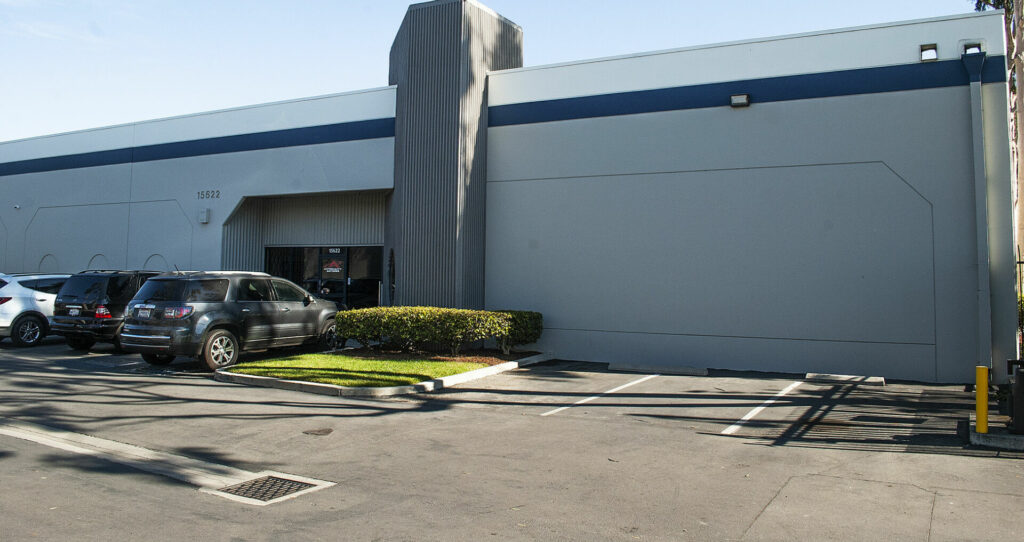
A native of California, Schafer rode motorcycles from the age of 10 and even did a little bit of motocross racing. In 2008, Schafer, originally a general contractor, got into riding at track days on his Ducati Hypermotard 1100.
“Back in 2009, I bought one of the first [lightweight] lithium batteries on the market,” said Schafer. “It was like this hand-built one by some guy on the internet, and I was like, ‘Wow! This is an incredible idea.’ I really liked it. It lasted about two or three months before it failed and didn’t work.
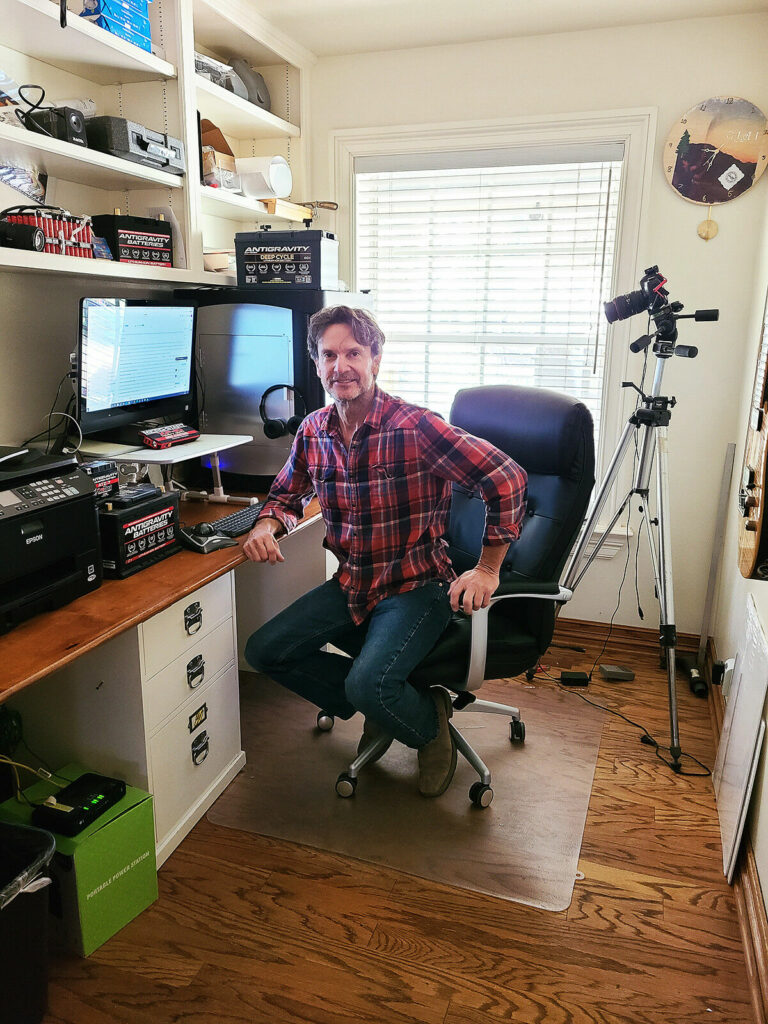
“In the meantime, I had a friend who was a battery engineer for SBC Global. He took a look at it, and said, ‘If we did this, this, and this, we could make this product really work well.’ So, we did what he suggested, and we produced those in 2010. We started selling them to our track day friends. And what happened was, he was completely on point and the products really worked.”
Schafer spent the next year building his lithium-ion Antigravity Batteries (named for their weight savings, up to 80% compared to some lead-acid batteries) in his garage at home and things went well. The four small-case battery models Schafer and his friend (who left the company early on) developed for motorsports applications were popular then and continue to be some of the company’s best sellers.
Antigravity Batteries expanded its offerings from the small-case motorsports batteries to lightweight lithium-ion batteries in cases sized to serve as direct OEM replacements on streetbikes and the new crop of off-road bikes with electric start, but it was the original batteries that inspired Schafer to come up with Antigravity’s next big product line.
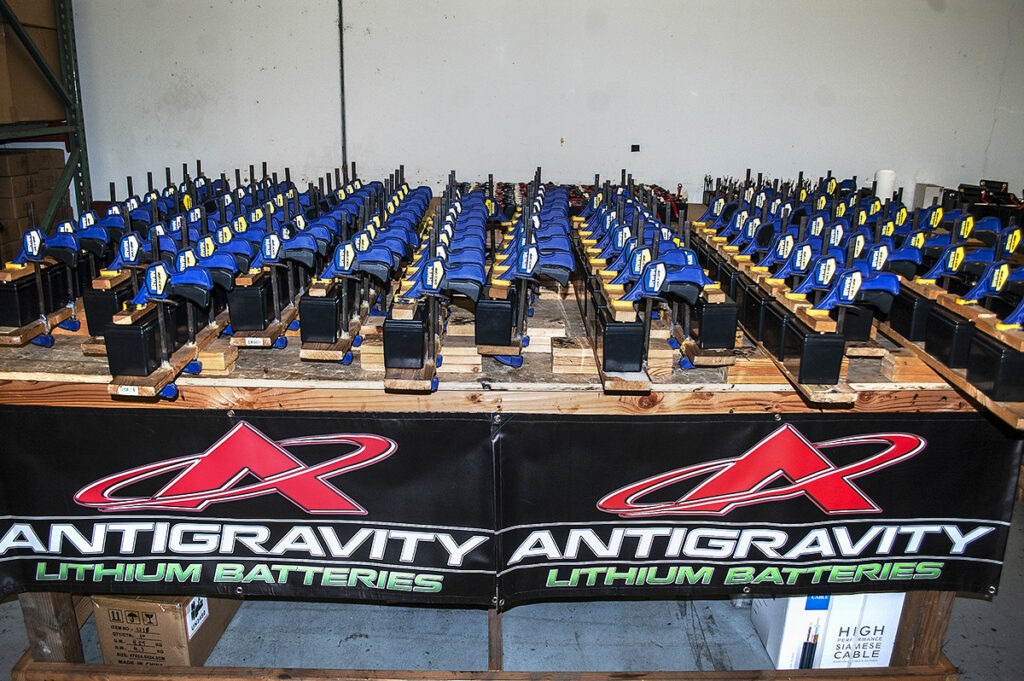
“I had accidentally left my truck on at the track and needed to jump start it,” said Schafer. “All we had was the small-case batteries out of the bikes. I took one of those, and it easily turned over the truck. I was like, ‘Oh my gosh! If our smallest battery will turn over a truck, why don’t we make a small product that can have that [capability] encapsulated with the ability to charge lap tops, phones and USB devices?’”
And so, the Antigravity Batteries Micro-Start line of portable power supplies was born. “We were arguably the first brand to market in 2013,” said Schafer. “We were almost a year ahead of anyone else, so we had tremendous success with that product. We sold 500,000 the first year. It was so crazy.”
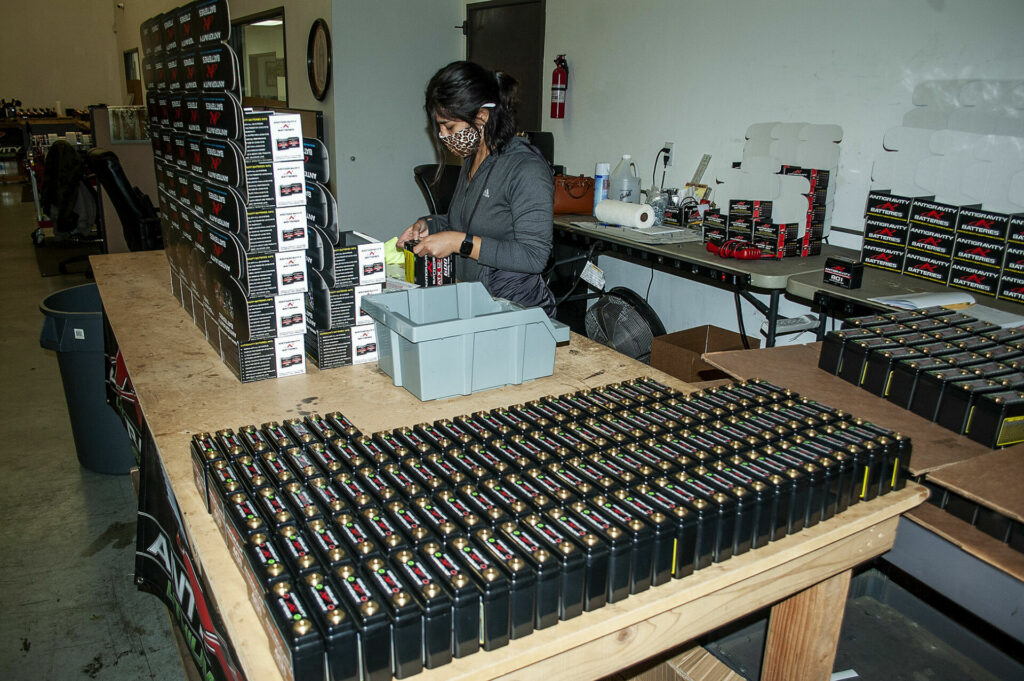
Since then, Schafer has learned a lot about batteries and especially lithium-ion batteries. He’s now his own battery engineer, designing and developing specifications for more innovative products, resulting in the new Re-Start line of batteries for cars and motorcycles.
“Over the last five years, we’ve progressed from motorcycles to car batteries, and from car batteries we’ve developed the internal Battery Management System (BMS),” said Schafer. “We’re the first company to bring a comprehensive battery management system to market.
“What the BMS does is protect the battery from being overcharged or over-discharged. Say you over-discharge it by leaving your lights on; it will shut off and still retain enough energy to start your bike or car about four more times. So, you’ll never be stranded by a dead battery again.”
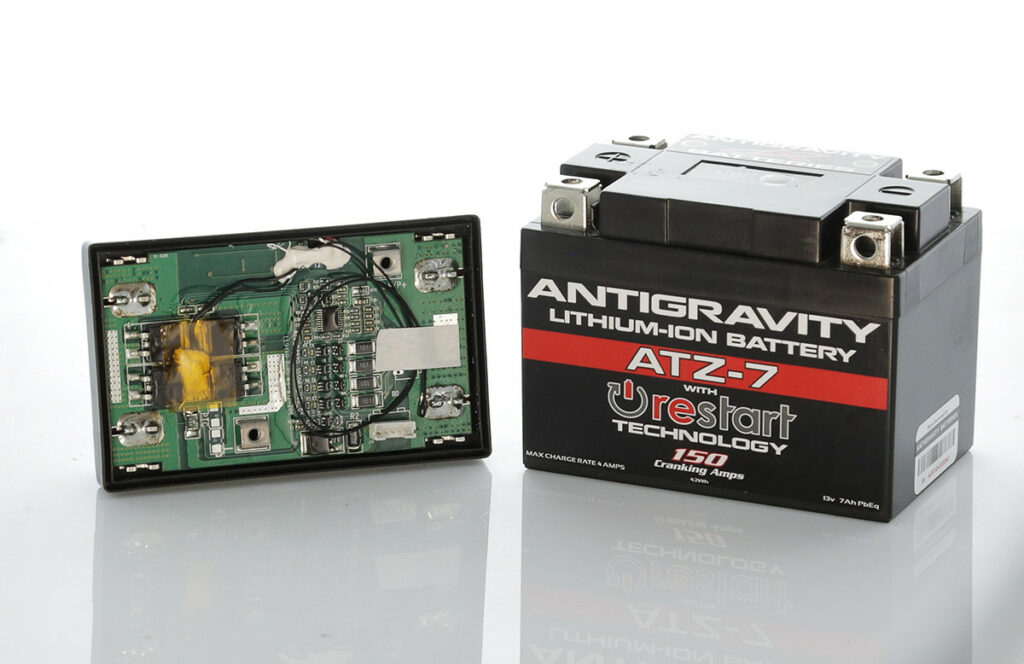
Anyone who has turned their motorcycle’s ignition key past Off and accidentally turned on the parking lights knows how easy it is to accidently drain a bike’s battery. But Schafer said alarm systems and aftermarket engine electronics are sometimes installed in a way that is constantly draining batteries. And whenever you drain a battery — any battery – too low, is suffers irreversible damage, according to Schafer.
“If you allow a lead-acid battery to discharge below 10.5 volts it gets damaged and won’t have the capacity or the power it once had,” said Schafer. “Once it drops into the 4-volt range then it’s really damaged severely.”
To make Re-Start batteries even more convenient, the reserve power in automotive units can be activated without even opening the hood. All the owner needs to do is press a button on the supplied key fob, which is nice because some newer cars like the 2020 Chevy Corvette have batteries that are not easily accessible. Re-Start batteries for motorcycles require a button on the battery to be pushed to activate its power reserve.
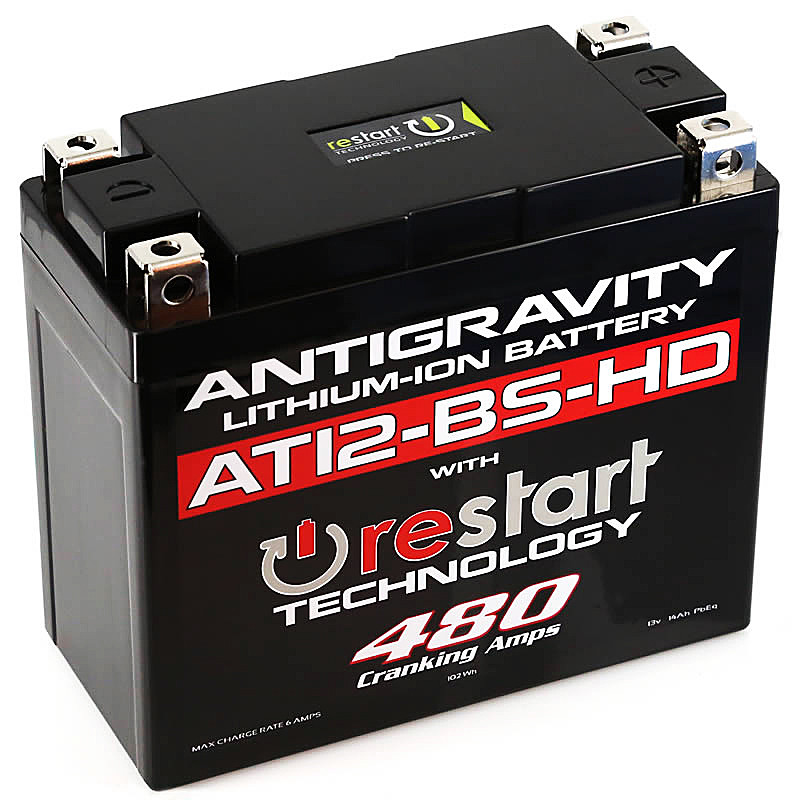
Antigravity Batteries is carrying this technology over into its new line of deep-cycle batteries. That’s right, 100 Ah (amp-hour) deep-cycle, lithium-ion batteries that weigh about 60 pounds less than a comparable lead-acid battery and come with wireless monitoring via Bluetooth. “So even if the batteries are in the hull of your RV [or boat],” said Schafer, “you’ll be able to check the voltage.”
Keeping up with technology is one of the challenges faced by Antigravity Batteries, but another is educating the market to cultivate demand for advanced battery products, says Schafer. In response, Schafer has started a YouTube channel (https://www.youtube.com/channel/UCS-Lh_lKT9g5mkMTh-HW4xw) where he creates and posts videos highlighting his products, their technology, and lithium-ion batteries, in general.
Schafer shoots his videos and does product development and testing at his home in Ojai, California, where he has an office/studio and a motocross track. Then twice each week he commutes 90 miles south to Antigravity Batteries’ primary location in Gardena (south of Los Angeles).
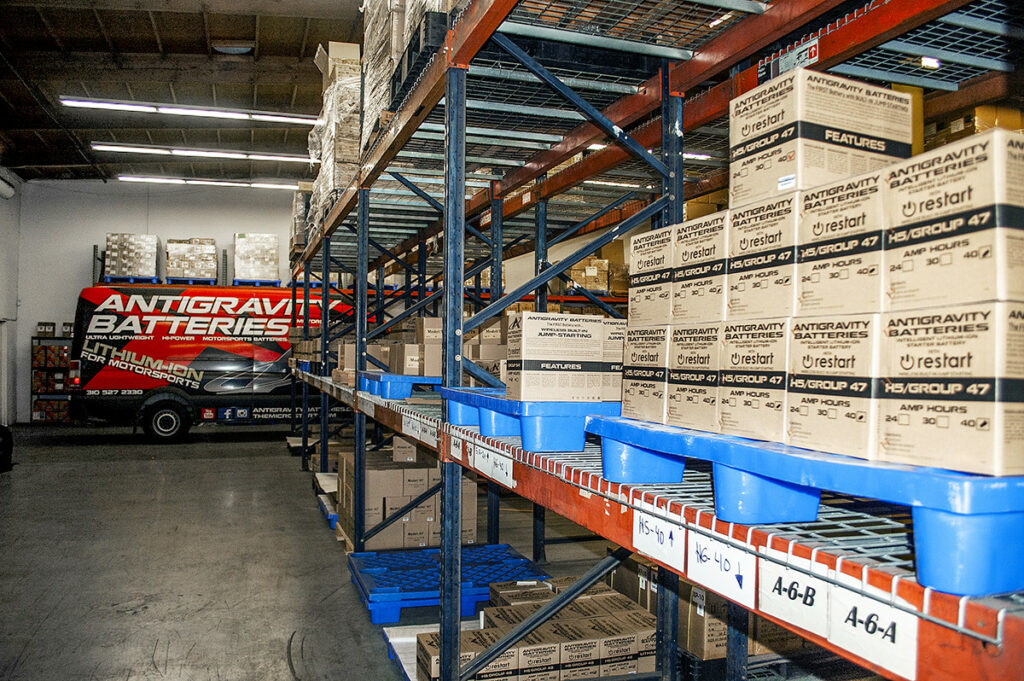
There, the company’s 12 employees assemble, label, and package the four small-case battery models; receive the Re-Start batteries, Micro-Starts, and other products from manufacturing partners in China; do quality control testing and warranty service; and market, sell, and distribute the products to consumers and dealers.
And aside from a few employees working remotely and the remainder working socially distant in their 12,000-square-foot facility, Antigravity Batteries’operations (an essential business due to its position in the transportation sector) have continued without a hiccup during the pandemic.
“We stayed busy during COVID because we can make some of our stuff here in the USA and we have a large stock of all of our products,” said Schafer. “I think that’s one of the important things. We stock a lot more of our product than a lot of our competitors. That’s how we work. So, that’s actually boosted our name during this period. Sales have really gone up, and that’s because a lot of people were out of batteries and we had product ready to ship.”
Antigravity Batteries started small with its founder Scott Schafer building lightweight lithium-ion batteries for motorcycles by hand in his garage, but he had a vision of where the technology could go. Now, 10 years, a lot of hard work, creative thinking, and smart business decisions later, Antigravity Batteries has become one of the strongest brands in its segment. The motorcyclist-led company isn’t letting off the gas anytime soon.






